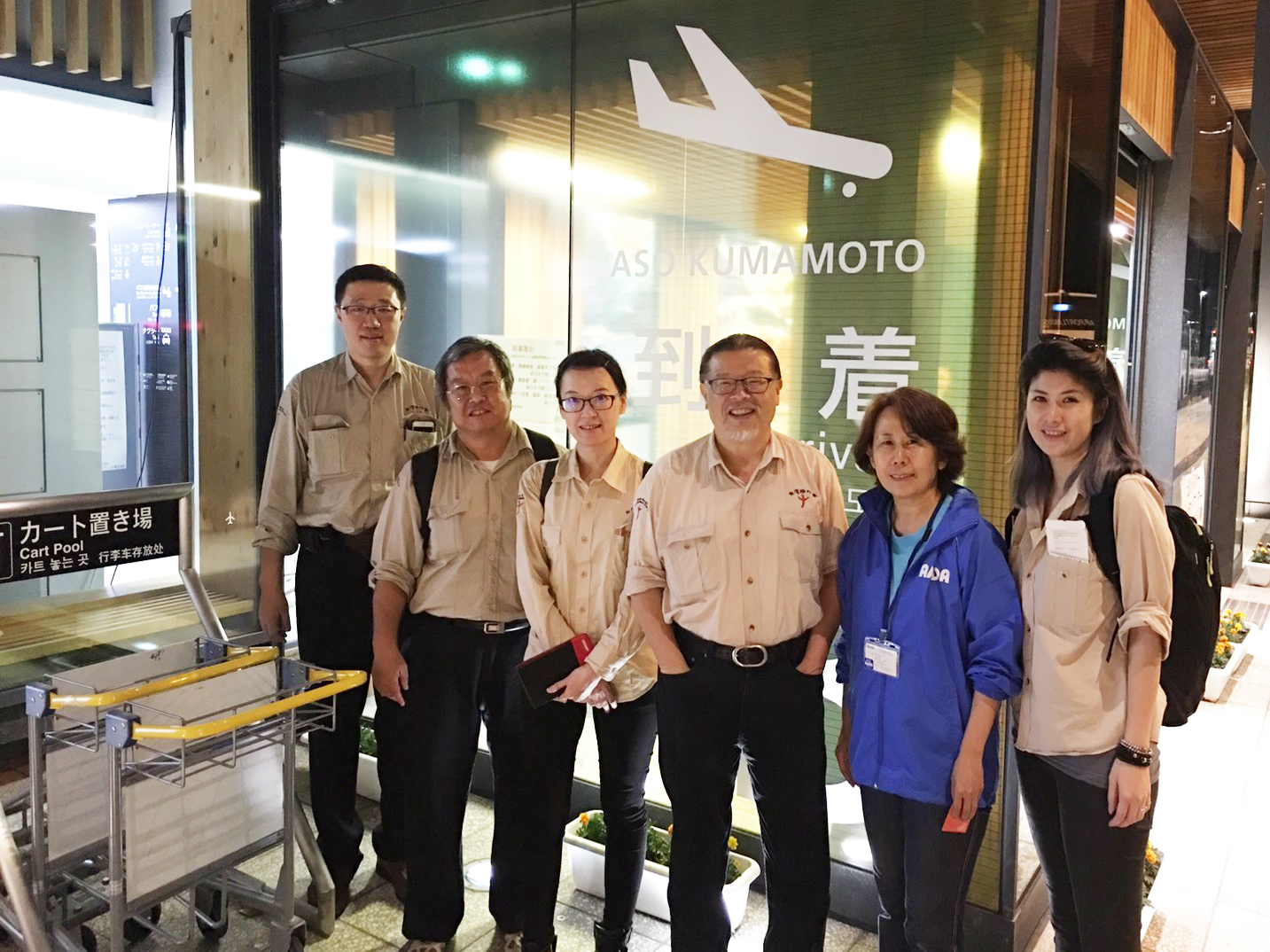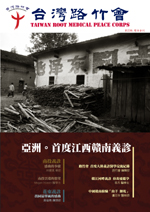
熱門標籤
Page Viewed:14253800
News
Taiwan Root Medical Peace Crops. Kumamoto Earthquake Assessment Trip Briefing (4/25-29, 2016)
Taiwan Root Medical Peace Crops.
Kumamoto Earthquake Assessment Trip Briefing
(4/25-29, 2016)
April 16, 2016, a powerful earthquake measured 7 on the Ritcher scale happened in Kyushu island of Japan at 1:25 AM local time, which the epicenter is located in Kumamoto. Considering the MOU signed in March 2015 by TRMPC and AMDA, and another MOU –Dispatching physicians and assistance systems for medical relief assistance in disaster situations was signed in July on the same year. As the disaster happened, TRMPC took the immediate action to ask Peace Winds Japan and see if there is a need for support. TRMPC got the negative response since they were still in the assessment status for the extend of the disaster. Four days later, TRMPC was forwarded an invitation of disaster assessment from AMDA’s president Dr. SUGANAMI by Ambassador Sheng from Taipei Economic and Cultural Representative Office in Japan and for providing consultation and medical knowledge exchange.

-
10pm on April 25, 2016. Upon arrival at Kumamoto airport, Ms. Tae NAMBA, the board member of AMDA came to welcome the team.
(Left to Right) Dr. Wang, Dr. Cheng, Dr. Teng, Dr. Liu, Ms. Tae NAMBA, Ms. Annie Liu
Elementary school became shelter
On April 26, Ms. NAMBA led the team to visit “Kuangan Elementary School”. Ms. NAMBA’s house was collapsed caused by this strong earthquake. Dr. Hayato ORUI gave us the introduction and explanation for the supporting and operating system AMDA has provided to the shelter.

- Street site
.jpg)
- Street site

- Street site
Mashiki Town Gymsnastics Center “Tent Village”

Later on, Dr. Hayato ORUI took us to visit “Tent Village”. The huge stadium is occupied with many tents, and each tent is accommodated one household. Besides AMDA, some organizations also set the station there, such as Peace Winds Japan (PWJ), Japanese Red Cross Society, and Japan Self-Defense Forces.

- Japanese Red Cross Society Medical Station

Back to AMDA’s station in Kuangan Elementary School, our team met the Consul General Mr. Rong Yee-Jung, Taipei Economic and Cultural office in Fukuoka. (Middle man with black suit). During the meeting, he talked about victims’ psychological impact of trauma and the suggestion from our doctors. Those include:
Since victims have a great anxiety about the thought of “house may collapse at any time”, they chose to live or sleep in the car. Many elders have continuous psychological pressure with sitting in the car for a long period of time, which resulted in more than 10 deaths. Therefore, our team suggest that elders should drink more water and come out to move around from time to time. Supplementing enough water may avoid blood clots, and they will go to the toilet often that creates more opportunities for them to move around. Fixed time activities, such as trackwork that they should develop the fixed group exercises.
2. EMOTIONAL DISTRESS AND DEPRESSION
The local atmosphere has been very low, which is caused by psychological trauma and stress of the disaster, being in a small space for a long time, crowded in the classroom, and Japanese depressed character. Our team recommended that they could play some relaxed, inspiring songs that they could sing along. By leading them to sing in a relaxed way, it will bring out positive emotions and relieve stress.
Blessings from Taiwan
The team visited medical station in Kuangan Elementary School. Dr. Wang brought “Health is wealth”-Tainan train ticket to give to the victims, which is to bless the local residents for them to stay away from sadness and stand up to rebuild their homes.


- Dr. Liu gave the train ticket to the local children. Dr. Hayato ORUI was explaining the meaning of the ticket.

- Elders were smiling happily when receiving the ticket.
On April, 27, Mr. ONISHI (president of PWJ) flew in Kumamoto to meet us. Mr. Tang, program coordinator of PWJ took us to their temp station in the gymnastic stadium and discussed about their countermeasure of post-disaster victim care. (Note 1)

-
(Left to Right) PWJ president Mr. ONISHI, Dr. Liu, Dr. Teng, Dr. Wang, Dr. Cheng, PWJ Program coordinator Mr. Tang, Ms. Annie Liu

-
Visiting victim camp
Since the victim camp are composed mostly tents, we suggest them to set up a bigger reception area (outdoor activity area with canopy) with consideration of possible emotional depression. It not only provides space for visitors, but also increases their interaction by spending less time in tent alone.

- Special care station for pets
Pets have become the owner’s solace after the disaster. PWJ’s victim camp sets up pet care station and have pet beautician to take care of these pets, so that the owners feel more comfortable with ease when staying there.

In Mashiki Gymnasium camps, we have seen some thoughtful amenities.


- Provided by the Self-Defense Forces, bathing area can relieve the pressure for the victims.

- Shower room and restroom set up by Self-Defense Forces.

- Mobile post office, provides postal service for the victims
On April 28, the team headed to the main office of AMDA and met with the president, Dr. Suganami for the meeting and had interview by the local media.

-
In front of AMDA’s main office1st on the Left: Dr. Suganami/AMDA’s president
1st on the right: Junko Ogura/AMDA’s assistant
2nd on the right: Kou Ro/Interpreter

-
Meeting the Mayor of City of Soja Soichi KATAOKA (the man with dark suit in the middle)
Dr. Suganami pointed out the main purpose for inviting Taiwan Root for disaster assessment. Japanese government predicts that there might be tsunami striking Shikoku in the near future. With that, AMDA wants to meet Dr. Liu to talk about some prevention strategies. Furthermore, AMDA’s president also invited Taiwan Root for attending the meeting in early July and looked forward to Taiwan Root’s full support.
Note 1. Taiwan Root and PWJ signed MOU in 2007. The ceremony was held in the office of Taiwan Root.



